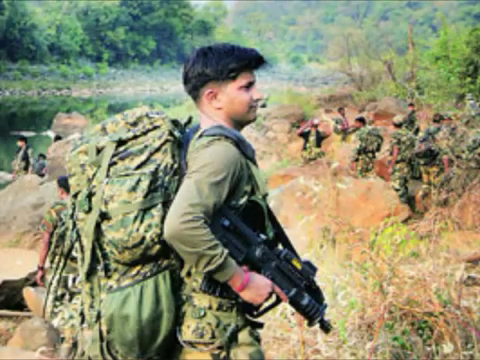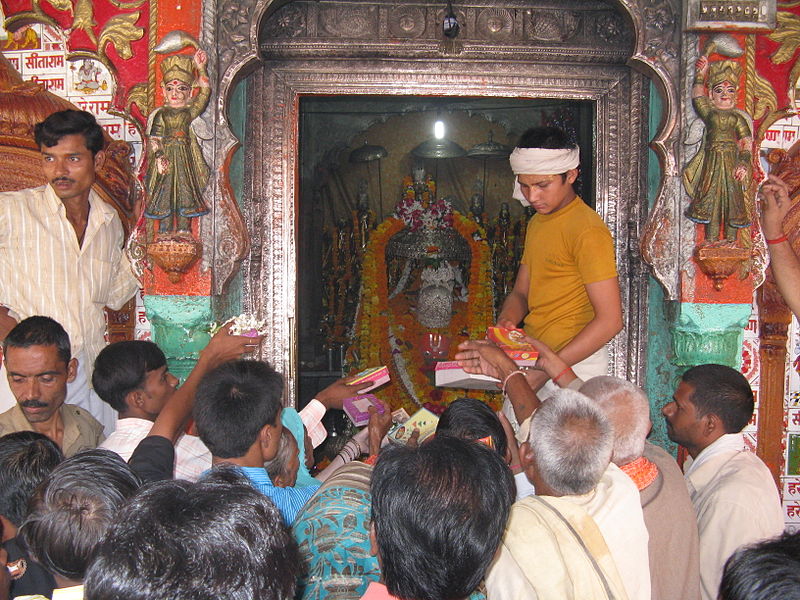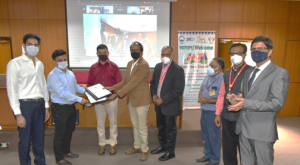Attack in Chhattisgarh shows Naxal menace is still there
Attack on security forces at Tarrem in Chhattisgarh is testimony to the undiminished threat of Naxalism, also called Maoism
Ramdev Bakshi | April 4, 2021 1:02 pm

A trooper of the Commando Battalions for Resolute Action or CoBRA in a Naxal stronghold in Chhattisgarh (Photo courtesy: https://commons.wikimedia.org/)
The massive attack on security forces at Tarrem in Chhattisgarh is testimony to the undiminished threat of Naxalism, also called Maoism. While jawans have died, 20 are injured and 21 missing. Politicians of different parties may try to derive mileage from the mayhem but the need of the hour is a rational, comprehensive approach towards the menace.
“An encounter broke out between security forces and Naxals along the Sukma-Bijapur border in Chhattisgarh on Saturday after a party of jawans was ambushed by Maoists near Jonnaguda village around noon. The forces were scattered and trapped along a two-km long stretch of forest area,” India Today reported (https://www.indiatoday.in/india/story/chhattisgarh-encounter-naxal-maoists-tarrem-sukma-bijapur-cobra-crpf-jawans-missing-1786930-2021-04-04).
Quoting sources, the report said that intelligence agencies had alerted authorities about the presence of Maoists along the Bijapur-Sukma border. “Details available with AajTak/India Today confirm that nearly 200-300 Naxals were camping in Bijapur, Sukma and Kanker for the past several days.”
It was known that Naxals were planning to plant an IED in Bijapur. Maoists were also looking to target camps of security forces in the jungles of Chhattisgarh. “More than 400 personnel of the CRPF, Commando Battalions for Resolute Action (CoBRA), District Reserve Guard (DRG) and the Special Task Force (STF) launched an anti-Naxal operation on the basis of this report when they were ambushed by Naxals on Saturday.”
According to an estimate by security forces, more than 15 Maoists were killed in the encounter. But the fact that the encounter took a heavy toll on security forces, despite the availability of intelligence inputs about Naxal concentration in the area prima facie hints at some level of slackness on the part of the officers concerned.
It also underscores the lethal capabilities the Maoists have been able to acquire in the recent years. Three points need to be made here. First, it would be foolish to underestimate the menace of Naxalism. Just because the Naxals operate in the regions far from the national capital, just because their activities do not attract the attention of the national media till they carry out a big attack does not mean that they have ceased to be a problem in the backward areas.
Second, the Centre should work in tandem with state governments to root out Naxalism instead of focusing on a bloated fear of ‘urban Naxals.’ The guys running amok in the killing fields of Chhattisgarh are much more dangerous than the activists justifying ‘class struggle’ in those areas. In fact, all parties must join hands to fight the menace.
Third, all parties should chalk out a new paradigm of development in backward areas. The conventional, statist model has clearly failed. This failure has perpetuated poverty and misery in the Naxal-infested areas. Naxalism is not just a law-and-order problem; it is a disease which thrives on a weak body-economic. The underlying conditions—poverty, underdevelopment, poor physical and social infrastructure—have to be removed to check the disease.
One hopes that the powers that be would take these points into consideration.






























